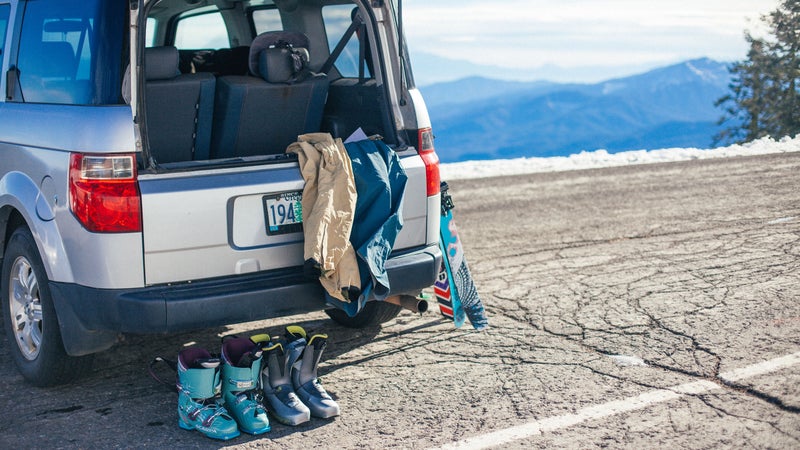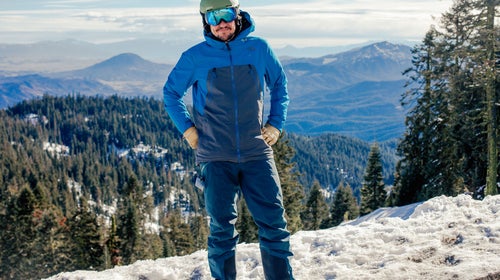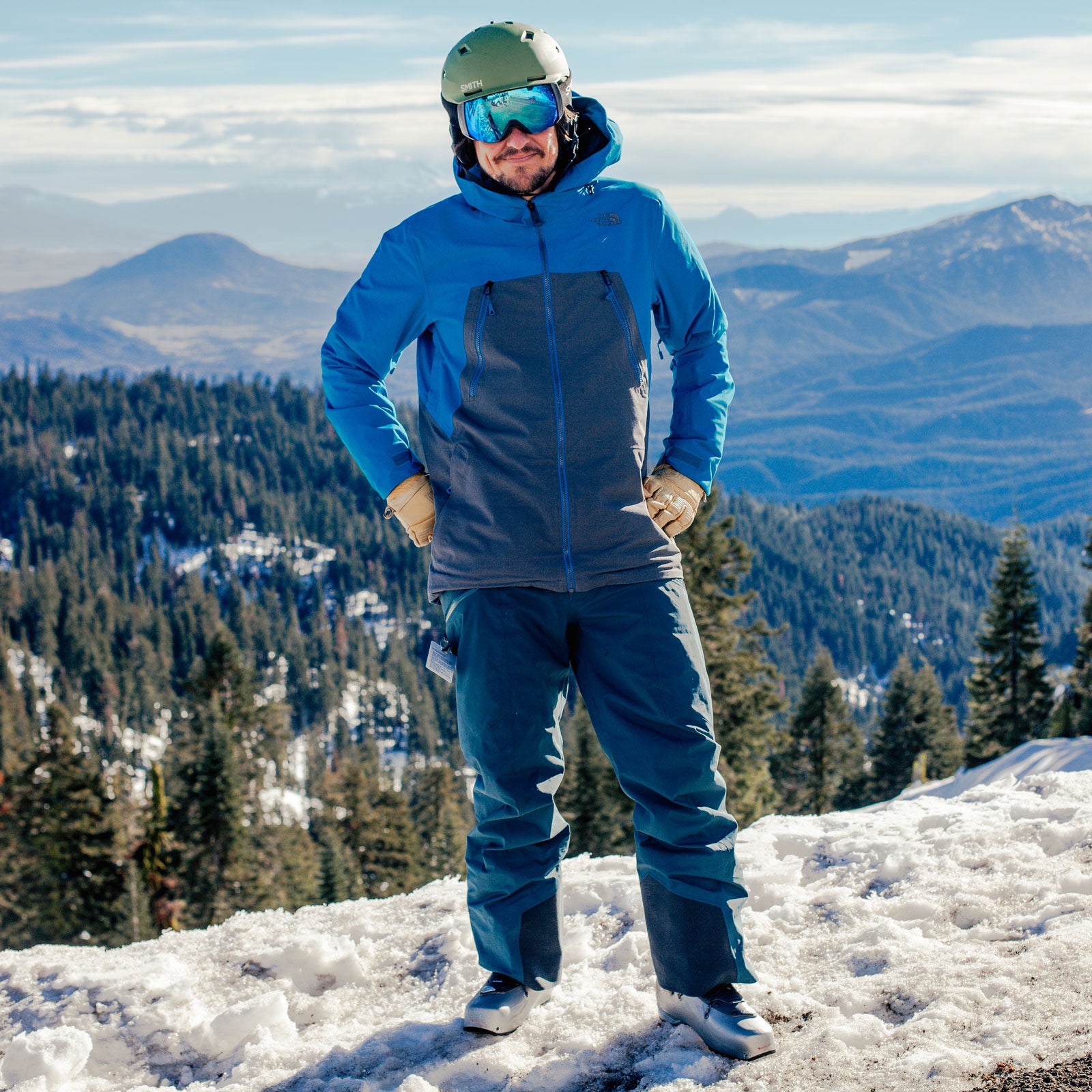When youÔÇÖre putting together your winter sports kit, resist the urge to prioritize a jacket over a pair of pants. DonÔÇÖt get me wrong, a jacket is important. But your legs do the majority of the work during a day of skiing or snowboarding, so ensuring the outer layer on your lower half fits well is key. Pants also need to keep you warm and insulated from cold chairlifts, prevent snow and slush from getting in, and be hardy enough to deflect sharp ski edges. Does all this mean you need to spend a weekÔÇÖs pay on top-shelf╠řski pants? Or will a lower-cost option╠řsuffice?╠ř
The Test
In past experiments, IÔÇÖve pitted the lowest-priced model in a category against the most expensive. Comparing the two ends of the spectrum provides╠řlots of takeaways, but╠řthe higher-end model is almost always the far superior product. That said, most people want middle-tier gear that offers worthwhile features╠řwithout a budget-breaking price tag. So for this test, I chose the $210 ╠řand the $499 .
I took each on a ski tour up Mount Ashland in blustery weather with temperatures in the high twenties and winds around 15 miles per hour. I also wore them for two full days at a resort╠řin similar weather. Finally, my wife sprayed me down with a hose in our╠řbackyard for a full minute to test the waterproofing.
The Results

Fit
This is where the two pants showed the widest gap. The Ballast╠řliterally chapped my hide at the resort, and three ÔÇťfriendsÔÇŁ offered unprompted comments on my visible crack.╠řIt does include belt loops, and something like the ($26)╠řwouldÔÇÖve alleviated╠řissue, but the pants also fit me poorly through the legs. The freeride styling left a lot of space for movement but also meant that the Ballast╠řwas just too baggy. The Sabre, on the other hand, felt like it was tailored just for me. It has a built-in belt, but even when I unclipped it to level the playing field, the pants stayed put at the╠řwaist. And they were still plenty╠řwide at the cuffs to accommodate my ski boots.
Winner: Sabre
Articulation
The Ballast╠řis intended for snowboarding, while the Sabre was designed with multiple uses╠řin mind. A lot of that comes down to nothing more than the companiesÔÇÖ╠řtargeted demographic.╠řThere are minor differences between ski and snowboard pantsÔÇöbagginess, venting, and color choices, to name a fewÔÇöbut╠řboth are meant to get you down the mountain comfortably. The SabreÔÇÖs legs had just right the amount of articulation, with slightly curved knees and a gusseted crotch that didnÔÇÖt impede my legs during downhill turns or long strides while skinning or boot packing. The baggy, straight-legged Ballast╠řdidnÔÇÖt get in the way as I moved up the skin track and initiated turns, but the pants didnÔÇÖt bend with my knees as readily as the Sabre.
Winner: Sabre
Breathability
I was extremely impressed with the BallastÔÇÖs Test-I-Cool╠ř(sigh) venting, which consists of a large, standard (read: not waterproof)╠řzipper that run from the inside of one knee, up the inner thigh, and down to the other knee╠řto let out╠řundercarriage steam. While it dumped heat better than the water-resistant outseam zippers on the Sabre,╠řit made for an exceptionally uncomfortable moment when a gust of wind sent spindrift into my nethers. Ultimately,╠řthe SabreÔÇÖs conventional vents did a fine job without risk of frozen man bits.
Winner: Sabre
Warmth
Both the Sabre and the Ballast╠řare lightly insulatedÔÇöwith a brushed-fleece-like liner and a synthetic mesh, respectivelyÔÇöand I never felt uncomfortably cold in blustery winds on the south side of Mount Ashland or while sitting on steel lift chairs╠řwith nothing underneath but a lightweight base layer.
Winner: Tie
Waterproofing
It was a complete draw here. Although Burton uses two-layer Gore-Tex in the Ballast, and ArcÔÇÖteryx three-layer Gore-Tex in the Sabre, no water penetrated the seams and zippers of either during the hose test or when I got blasted by wind-blown snow.
Winner: Tie
Style
I liked the freestyle cut of the Ballast╠řwith its baggy-but-not-too-baggy fit. But I received multiple compliments on how sharp the Sabre looked and only derision about the portion of my butt peeking out of the Ballast.╠ř╠ř
Winner: Sabre
Durability
My testing timeline didnÔÇÖt allow me to assess how each model fairs╠řover multiple seasons, but╠řthe Sabre has╠řa burly Cordura patch on the cuffs, which have a tendency to get worn out by ski edges. To be fair, the Ballast╠řheld up fine. Still,╠řthe three-layer construction of the Sabre╠řwill probably make them stronger in the long run.
Winner: Sabre
The Upshot
Once again╠řthe pricier product╠řwon the test. But does that justify the price difference? That all depends. As I always say when advocating for any piece of gear, itÔÇÖs never worth the money if it prices you out of the sport. You can get away with just about any pair of pants that will keep water off your bum if youÔÇÖre primarily skiing a resort. That said, having a model with a tailored cut, fine-tuned details, and perfect venting is going to make the experience much more enjoyable. If you foresee mellow days with frequent lodge breaks, the Ballast╠řis╠řan excellent choice. But if you╠řplan to really get after it this season, go with the Sabre.
╠ř


